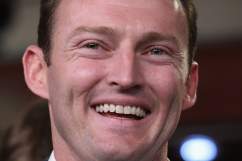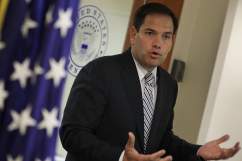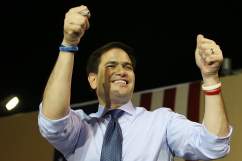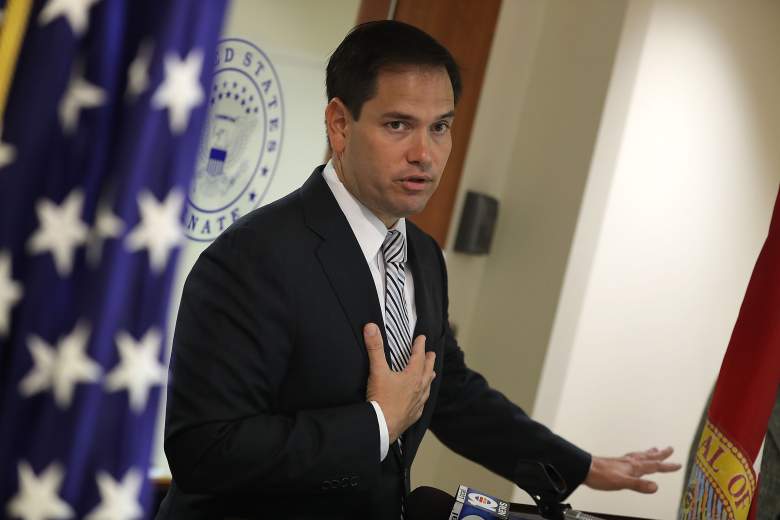
Earlier this month, Marco Rubio urged Congress to pass funding to combat the Zika Virus. (Getty)
The Florida Senate race will be one of the most closely-watched in November, as former presidential candidate Marco Rubio‘s seat is up. Rubio initially said that he would either become president or become a private citizen again. However, a report today by the Washington Post suggests that Rubio will run for a second term in the Senate.
After the report, Rubio did announce his plans to run for Senate. Rubio said in part:
Control of the Senate may very well come down to the race in Florida. That means the future of the Supreme Court will be determined by the Florida Senate seat. It means the future of the disastrous Iran nuclear deal will be determined by the Florida Senate seat. It means the direction of our country’s fiscal and economic policies will be determined by this Senate seat. The stakes for our nation could not be higher.
Rubio’s decision could have a major impact on the balance in the Senate. There are 34 seats up for election and at least 11 of them are competitive races between the parties. Democrats only need to win at least four of those to take control in the Senate. A win for Rubio could help the GOP keep their majority.
Florida Senate candidates only have until Friday to file to run. Both parties hold their primaries on August 30.
If Rubio wins the GOP nomination, he will likely face Patrick Murphy, a two-term Democratic House member from Jupiter. Several polls have already been conducted, according to RealClear Politics. Murphy only topped Rubio in support in two of them, although those were in more recent polls taken after Rubio dropped out of the presidential race. The most recent poll gave Rubio a 7-point advantage, showing support swining back his way.
Public Policy Polling – September 2014
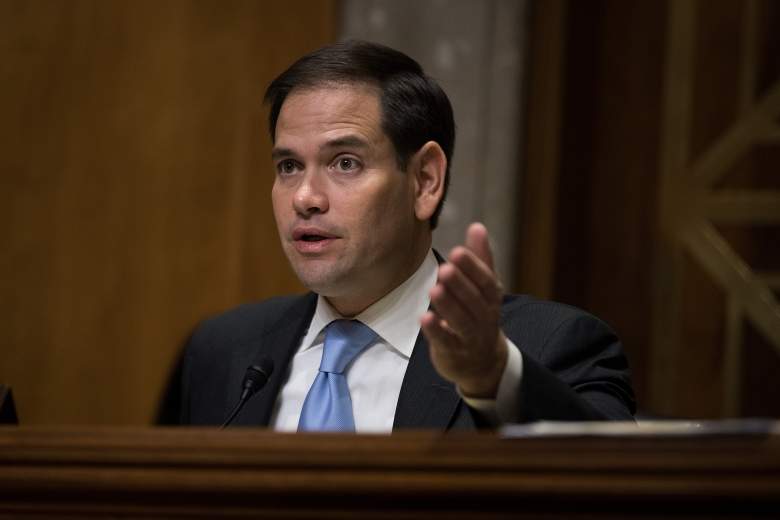
Marco Rubio at a committee hearing on heroin addiction. (Getty)
PPP performed an early poll between September 4 and September 7, 2014 with 818 respondents. The margin of error was 3.4 percent.
The poll found that 44 percent approved of Rubio’s performance in the Senate, but they would not support him as president. Hillary Clinton beat him 49-42 percent in the poll and 53 percent believed that he should not even run for the White House. This poll also found that Rubio would beat Debbie Wasserman Schultz 47-43, although she is not running for Senate.
Rubio ignored poll results and ran for the White House anyway, announcing his candidacy in April 2015. He won 165 delegates and the only state he won was Minnesota. Donald Trump beat him in the Florida primary.
| Candidate | Percentage |
| Marco Rubio | 46 |
| Patrick Murphy | 41 |
| Not Sure | 12 |
Mason-Dixon Polling & Research – March 2015

Patrick Murphy and other Congressmembers on May 20. (Getty)
Mason-Dixon Polling & Research conducted a poll of 800 registered voters between March 3 and March 5. The margin of error was 3.5 percent. Here, Rubio has a 46 percent favorability rating, while Murphy’s is just 16 percent. In fact, 67 percent of the respondents said they did not recognize Murphy. Still, Murphy has a smaller gap with Rubio than Wasserman Schultz.
This poll was conducted just before Rubio dropped out of the presidential race.
| Candidate | Percentage |
| Marco Rubio | 50 |
| Patrick Murphy | 38 |
| Not Sure | 12 |
Public Policy Polling – March 2015
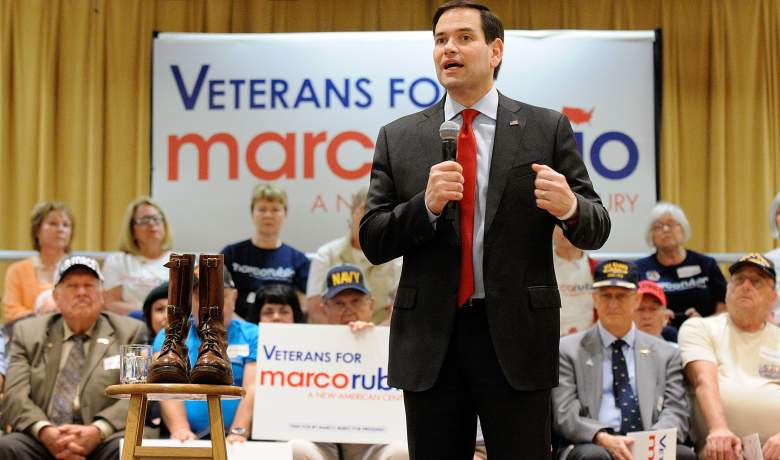
Marco Rubio campaigning in The Villages, Florida ahead of the Florida presidential primary in March. (Getty)
The March 2015 PPP poll was conducted between March 19 and March 22, 2015 and was a survey of 923 registered voters. The margin of error is 3.2 percent. This one showed Rubio beating Murphy and Murphy’s rival for the Democratic nomination, Rep. Alan Grayson.
| Candidate | Percentage |
| Marco Rubio | 48 |
| Patrick Murphy | 41 |
| Not Sure | 11 |
Public Policy Polling – September 2015
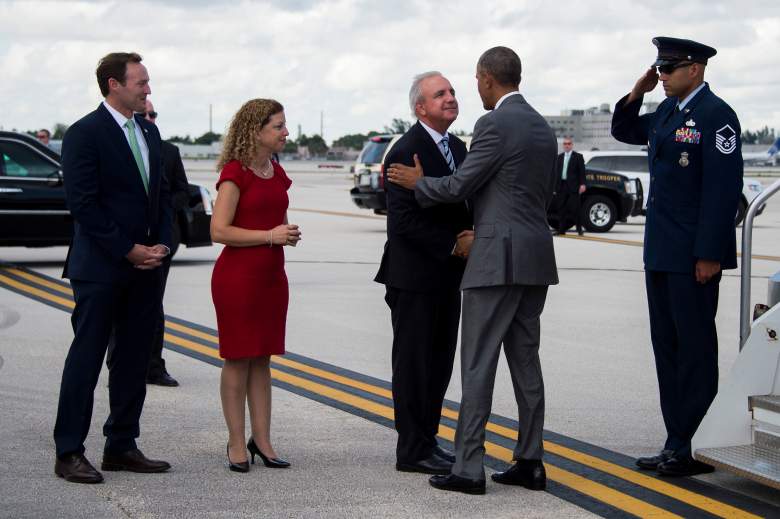
President Obama meets Miami-Dade County Mayor Carlos Gimenez, Debbie Wasserman-Schultz and Patrick Murphy on June 3. (Getty)
The September 2015 PPP poll showed that the major potential candidates from both parties faced a major hurdle: lack of name recognition. Only 27 percent of those polled even recognized Murphy. This poll was conducted between September 11 and September 13, 2015 with 814 voters surveyed.
| Candidate | Percentage |
| Marco Rubio | 46 |
| Patrick Murphy | 40 |
| Not Sure | 14 |
Public Policy Polling – June 7, 2016
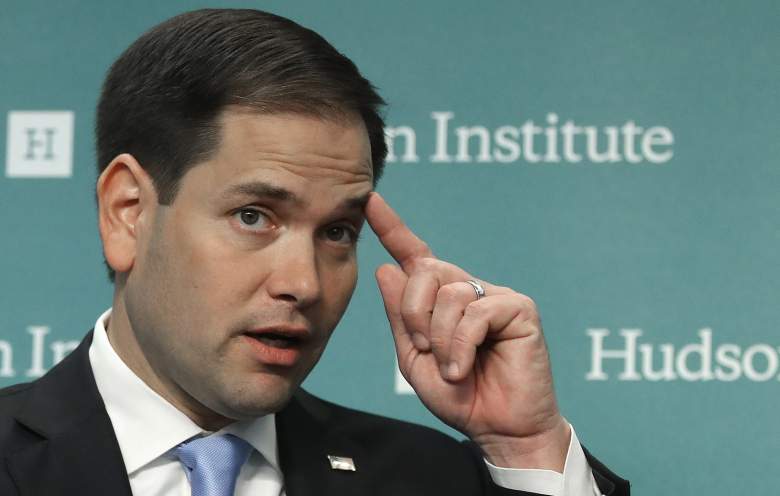
Rubio at the Hudson Institute in Washington DC on May 10. (Getty)
By June 2016, the race changed significantly, although Murphy still struggled with name recognition. The first PPP poll of June was conducted between June 2 and June 5 with 737 registered voters responding.
This poll showed signs that Rubio’s failed presidential campaign hurt him significantly in his home state. Only 32 percent of respondents approved of his performance in the Senate and 51 percent said that he shouldn’t even run for the Senate again. Murphy even had a 1-point advantage over Murphy in this poll. However, Rubio did come out on top against Grayson, 43-38.
| Candidate | Percentage |
| Marco Rubio | 43 |
| Patrick Murphy | 44 |
| Not Sure | 13 |
Public Policy Polling – June 17, 2016
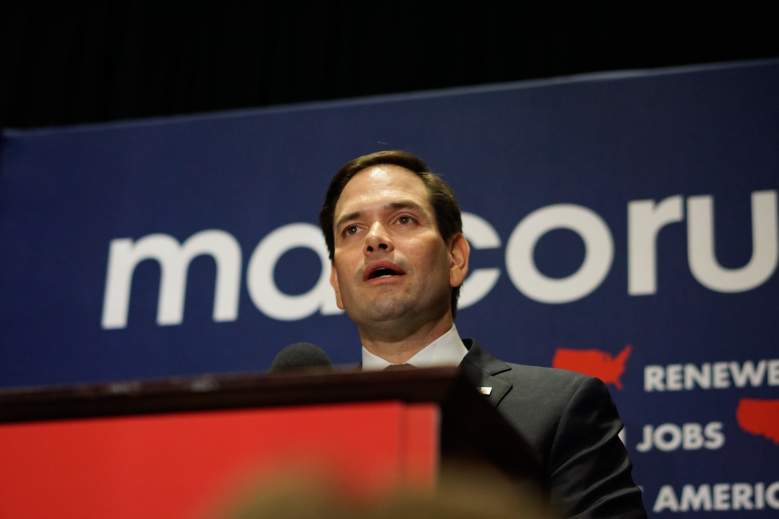
Rubio suspended his campaign after Donald Trump won the Florida Primary. (Getty)
After the Orlando nightclub shooting on June 12, PPP performed another poll, with 508 registered voters responding between June 15 and June 16. The margin of error was 4.4 percent.
Once again, this poll showed a growing disapproval of Rubio’s performance. Only 30 percent approved of his work in the Senate. Although he would beat Grayson by two points, the poll shows him behind Murphy by a single point. However, after those polled are told that Rubio does not approve of banning those on a terror watch list or those with a criminal background from buying guns, Murphy’s lead grew by 15 points.
| Candidate | Percentage |
| Marco Rubio | 41 |
| Patrick Murphy | 42 |
| Not Sure | 17 |
Quinnipiac University – June 22, 2016
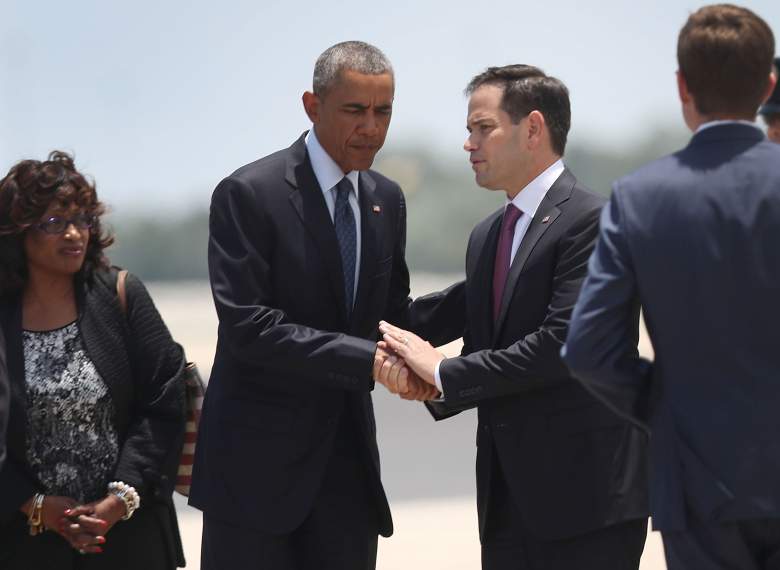
Marco Rubio shakes hands with President Obama on June 16, when Obama went to Orlando to meet victims of the Pulse nightclub shooting. (Getty)
A new Quinnipiac University Poll of 975 Florida voters was released today. This has a margin of error of 3.1 percent. It shows Rubio getting back the lead he had against Murphy before his presidential run. Rubio would also beat Grayson by eight points.
The poll also showed that Rubio’s performance in the Senate was gaining some support, even if it was very little. While 45 percent approved of his performance, 44 percent disapproved. Florida’s senior senator, Democrat Bill Nelson, has a 52 percent approval rating in the Quinnipiac poll.
| Candidate | Percentage |
| Marco Rubio | 47 |
| Patrick Murphy | 40 |
| Wouldn’t Vote | 3 |
| Don’t Know | 10 |
